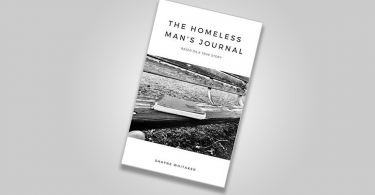Whether it be to conceal their true gender, race, heritage, or family name, pseudonyms have been used for centuries to succeed with freedom of anonymity. Female writers living in the Victorian period were the most likely to adopt this technique as society was rife with gender inequality and sexism. However, authors still use male pen names today for their own justifiable reasoning, or in some cases, as an attempt to appeal to their target audience, more specifically, the male sex.
Many of the authors that used pseudonyms were accepted by publishers without prejudice, gained readership thus popularity, and even maintained their success after eventually revealing the truth about their identities. This changed the world of literature and the perception of women writers forever, so this Women's History month we're honoring five of those women.
1. Jane Eyre (1847)
Charlotte Brontë’s bestseller was originally published under the male pseudonym Currer Bell. It received a critical reception at the time of publication as it seemed unlikely that a male would write a bildungsroman about a young heroine speaking for herself. This forced Brontë to use her pen name to denote the double standard regarding gender and femininity, responding in whichever way she saw fit. Writing as Bell, she retorted:
“I am neither Man nor Woman – I come before you as author only – it is the sole standard by which you have a right to judge me – the sole ground on which I accept your judgement.”
Jane Eyre inevitably became a bestseller, and with the population eager to find out information about the author, the truth eventually became common fact.
2. Wuthering Heights (1847)
Sticking to a family pen name, Emily was another of the Brontë’s to use a male pseudonym, calling herself Ellis Bell. The Victorian era did not question the male pseudonym, thinking the novels violent yet passionate content was too ‘improper’ for a woman to have wrote. Funnily enough, even the Brontë’s publisher was unaware of their true gender due to only receiving letters as correspondence. Eventually a face to face meeting in London proved otherwise – after some slight confusion anyway.
3.To Kill a Mockingbird (1916)
Harper Lee used her androgynous middle name rather than first name, ‘Nelle’, to publish this iconic novel that dealt with sensitive topics including, but not limited to, racial prejudice, as well as its sequel. This name was ignored to rid the risk of it being misidentified and pronounced ‘Nellie’. Also, her given name was significant as it was her grandmother’s name spelt backwards. The author declined interviews and made very few public appearances, possibly to keep her gender low-key?
4. Swastika Night (1937)
Katherine Burdekin used the pen name Murray Constantine to publish the Nazism inspired novel in order to protect her family in case the German’s invaded England. The anti-fascist dystopian was written with an obviously feminine stance but the true identity of Constantine was not discovered until the 1980’s by professor and author Daphne Patai.
5. Harry Potter (1997)
J K Rowling does not in fact actually have a middle name. The ‘K’ came from her grandmother after Ms. Joanne Rowling first submitted her tale of a boy wizard to Bloomsbury, and the publisher suggested that she use two initials instead of her first name. The intention was to not be off putting to her young male audience. The widespread success could be down to this, however, the fact the author is a woman may not have even mattered to children hungry for magical fiction.
"It sometimes makes sense for a female author to use a pseudonym, particularly when the main characters are male, or when it's a genre with a strong appeal to men, like military science fiction, certain types of fantasy or gritty thrillers."
-Penguin Editor Anne Sowards
Despite J K Rowling’s success as author of the Harry Potter books, she used the pseudonym Robert Galbraith to branch out into writing crime fiction with The Cuckoo's Calling (2013). Although in the 21st century a male name was a conscious decision rather than a necessity to be taken seriously in a male dominated world. To make light of her second name, Rowling created a Twitter account and commonly tweets what she calls her other personality. The ‘banter’ is real:
I'm so thrilled that @RGalbraith has been shortlisted for @the_cwa Golden Dagger for #TheSilkworm! (He's mislaid his Twitter password again)
— J.K. Rowling (@jk_rowling) July 1, 2015
Have you ever read a book and been surprised to discover it was actually written by a women? Let us know in the comments below or on Twitter @KettleMag!










